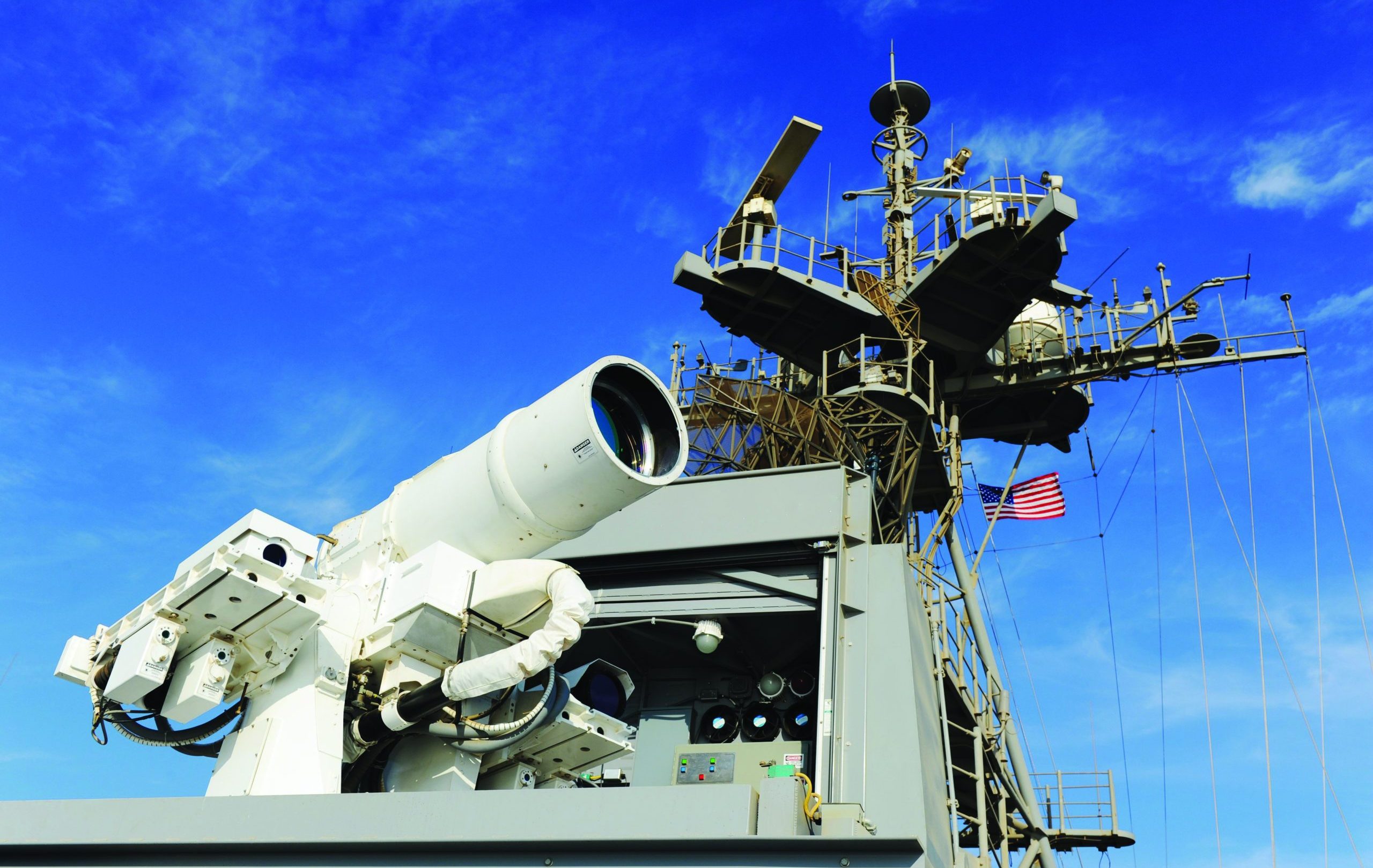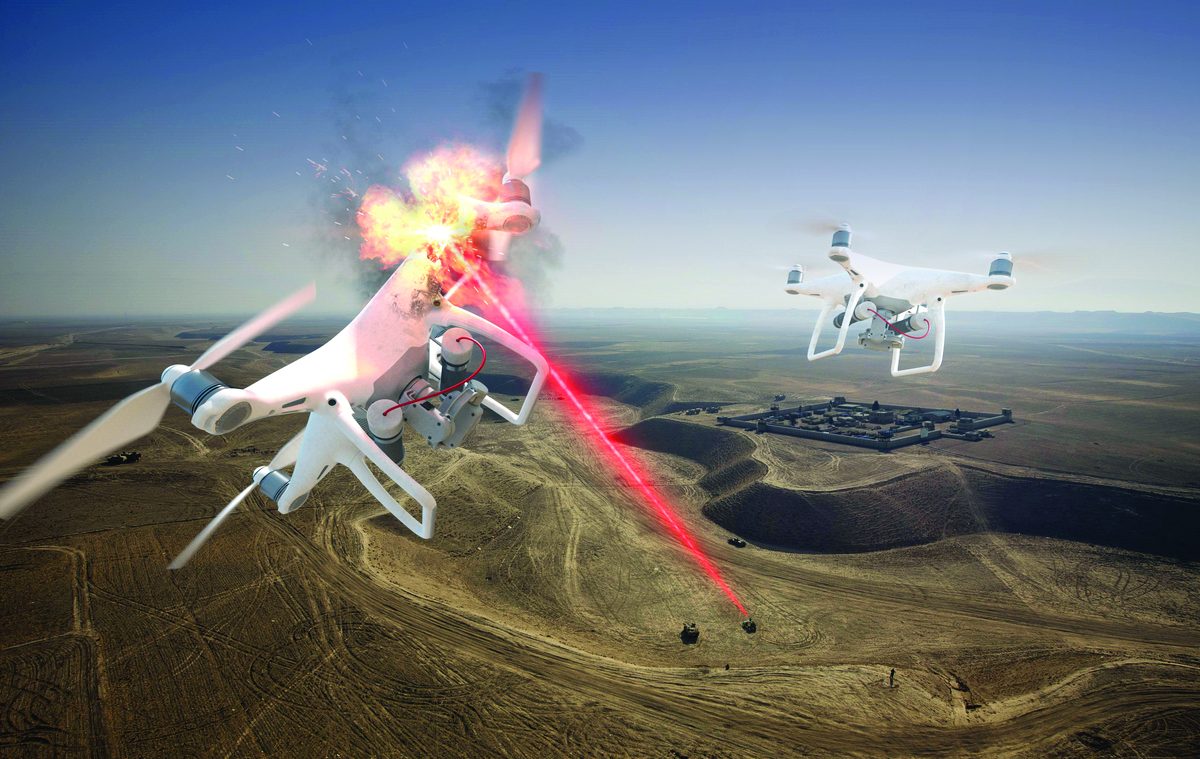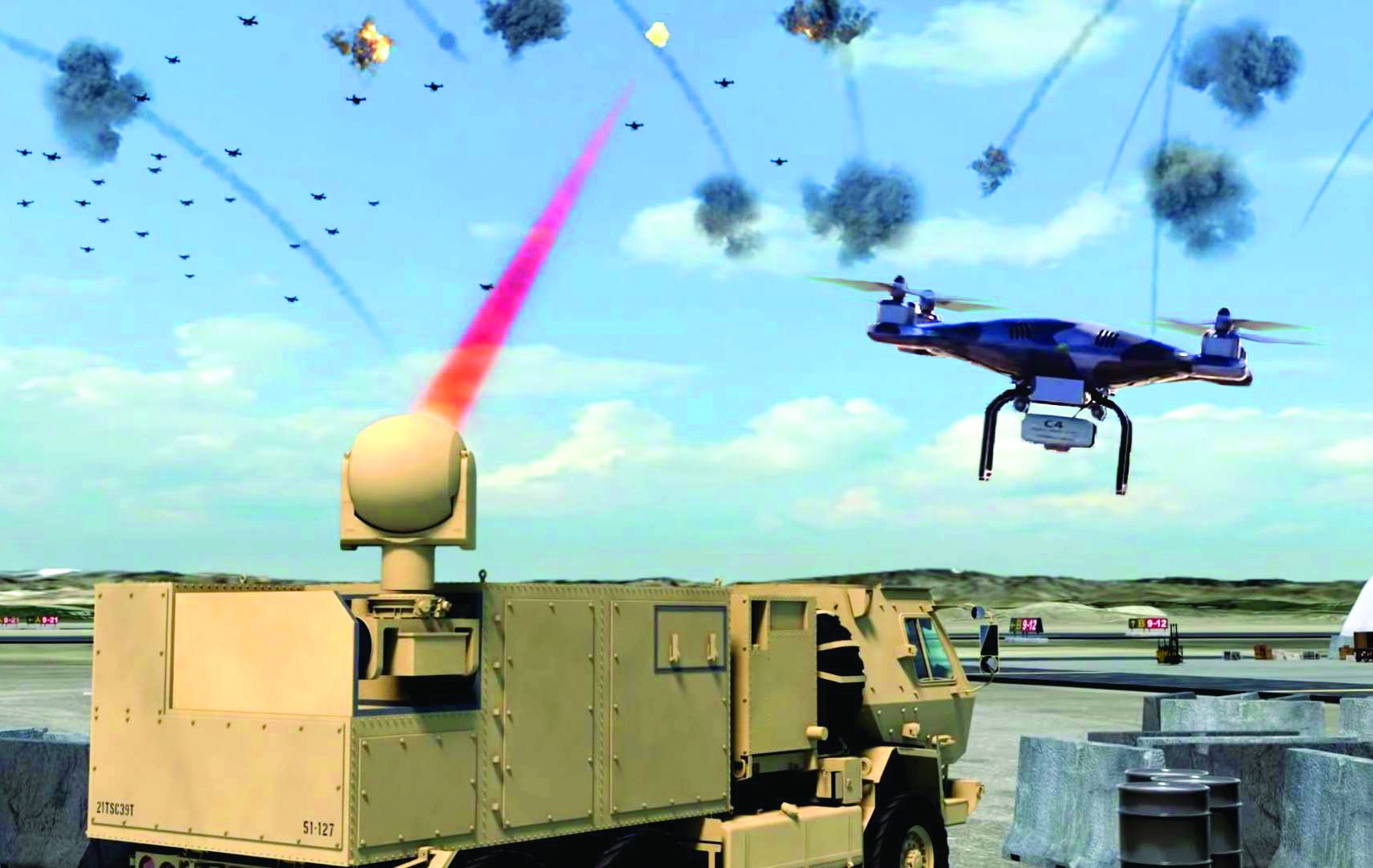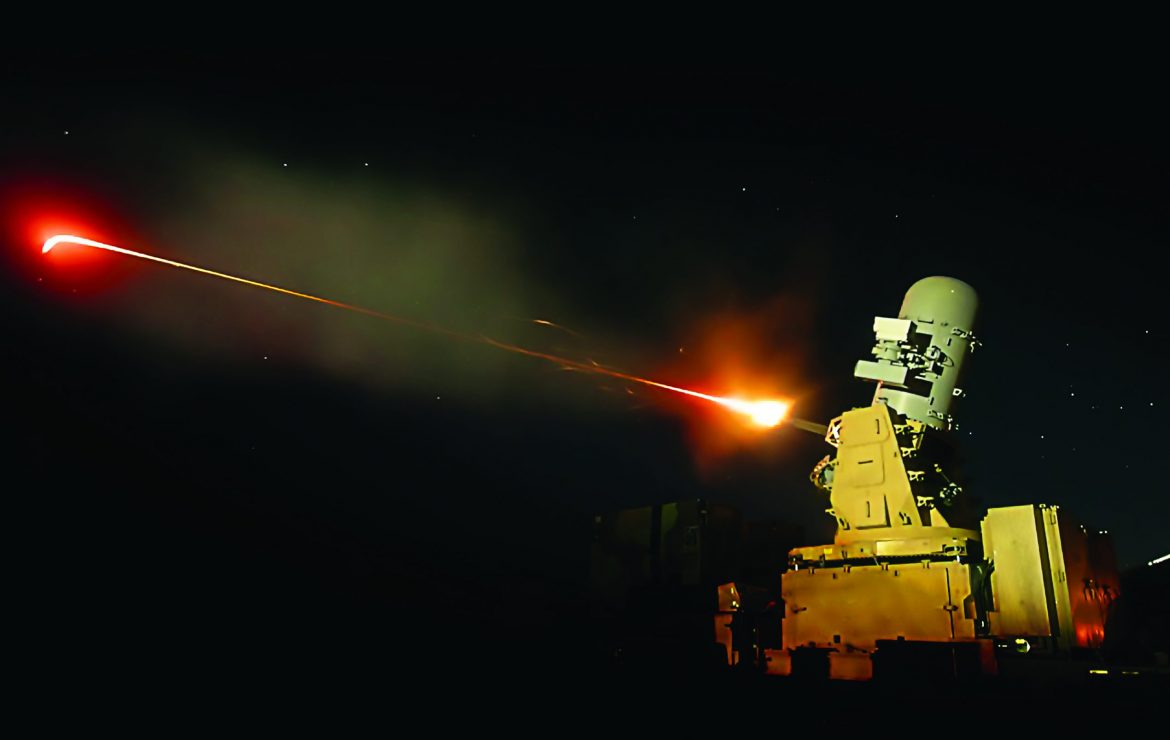Laser weapons may seem the stuff of fiction rather than fact; something we are more likely to see in a James Bond or Star Wars movie than in reality. In actual fact, experiments with viable laser weapons have been undertaken ever since the late twentieth century. At the beginning of 2021, it was announced that the US military was working on a spectacular step forward in laser technology, by developing a weapon more than a million times more powerful than any similar weapon used before.
There are many potential advantages to laser weapons that use either heat or light to attack an adversary system. Traditionally, laser weapons have been based on two principles. The earlier versions of this type of weaponry used the generation of a stream of intense energy projected along a beam onto a target such as a drone or missile, causing key components to melt and fail. To fire such a beam necessitates a powerful generator, typically able to generate up to 30 Kw of power. The same system can also be used at lower power levels to project a beam of light that “dazzles” and confuses sensors on target systems, again causing them to malfunction.

The US Navy is thought to have first trialled such a system in earnest in the Arabian Gulf in 2014. The device, a Laser Weapon System (LaWS) built by Raytheon, was mounted on an ageing amphibious transport vessel, the USS Ponce, and test-fired at two targets. The first was a mounted missile on a small boat, and the second an aerial drone. In both cases the results were impressive in terms of accuracy and effect, disrupting and then destroying both targets by causing them to catch fire.
At the time of the demonstration, the US claimed the location of the test – close to Iranian waters in the Gulf – was not deliberately provocative. Instead, it was claimed that certain atmospheric conditions in that location were useful for testing the reliability and accuracy of the weapon. However, there is no doubt that incidents such as the attack on the USS Cole in 2000, in which 17 sailors were killed by a speeding boat packed with explosives, have caused the big navies to think about how best to counter rapid and low-sophistication attacks on their naval vessels in such locations. The advent of small and fast-moving aerial drones has added to the concerns.
These first-generation laser weapons carry several potential advantages over traditional munitions. Firstly, they are much faster from shooter-to-target than projectile munitions, and thus much more accurate against small, fast, and agile targets over distance. Secondly, while the first systems were very expensive (the Raytheon system tested in 2014 cost approximately $32 million), the cost of munitions is very cheap, representing just the cost of generating a burst of electricity. This is considerably cheaper than a guided missile, each one of which can cost more than $1 million. The LaWS also allow for continuous munitions, with each shot ready in the short time it takes for the generator to cool and then recharge.

However, there are disadvantages to the LaWS technology. Any optical-based system faces problems with certain atmospheric conditions such as fog, rain, dust or sand particles in the atmosphere, all of which can impact accuracy and range. Mounting such weapons on a pitching ship also requires complex technology to maintain the accuracy. Similar systems have been tried in other domains.
An airborne anti-ballistic missile laser (ABL) was tested by the US military in the late 1990s, but problems with generating enough electrical power to make the system effective proved to be somewhat intractable.
Similar problems bedevilled the land-based anti-artillery Tactical High Energy Laser project, which needed a huge generator and trailer carrying fuel to power it. The cost and lack of manoeuvrability of such a system caused it to be returned to the drawing board.

There were also concerns with laser weapons that missing the target could inadvertently take out a civilian system, such as a communications satellite or commercial aircraft. Taking out aerial drones can also be problematic if they crash-land on populated areas and cause casualties on the ground, although this is not a problem confined to laser weapons. It is also the case that defensive measures against laser shots could be developed relatively easily, such as heat-resistant and reflective coatings.
The Ultrashort Pulsed Laser (UPL) has the potential to neutralise many of these problems, while delivering all of the gains of laser weapons. The advantages it offers are based on a fundamental change in concept.
The UPL generates a considerably higher burst of electricity than previous weapons, at around a trillion watts, but delivers it in a much shorter burst, typically one quadrillionth of a second. The second key factor in the ULP concept is that it does not aim to physically “burn” a target with high energy to the same extent as previous laser weapons (although some degree of “ablation” can occur), but to use the concept of electromagnetic pulse (EMP) energy to disrupt and destroy electrical systems. In this way, a drone, for example, would be knocked out of the sky primarily through a failure of its electronics.
Through this approach, the UPL tackles a number of disadvantages of the earlier laser systems. A dramatically shorter dwell time on the target means higher pinpoint accuracy against a fast-moving target, and a much more quickly delivered effect.
The risk of disruption by the pitch of a vehicle or vessel firing the weapon, or by atmospheric conditions interfering with the beam, are all greatly reduced by the split-second duration of the shot. Similarly, the system also reduces the risk of a miss and hitting the wrong target.
In terms of cost, while higher power is needed for each burst of power, the cost of each shot is greatly reduced, down to a few cents by some estimates. All the same advantages are maintained, such as an endless supply of munitions as long as the system can be powered.
The technology underpinning the UPL system is proving to have enormous potential in civilian contexts. Split-second pulses of light can target and cut materials with pinpoint accuracy.
This allows for increasingly accurate nano-engineering and design, such as that of miscrosopic surgical instruments, sensors, or components of electrical devices. The temperature load on surrounding materials is also sharply reduced by the extremely short burst of energy. The understanding and design of different types of reflective and conducting materials and surfaces has been greatly enhanced by the technology.
Delicate surgical procedures, such as those on the eye, for example, have the potential to become much more accurate and to carry less risk of damaging surrounding tissues. Even procedures such as the removal of tattoos can be enabled by the pulverisation of ink particles under the skin, thanks to UPL technology.
In the military domain, the potential risks of EMP interference have been a growing concern as systems become ever more network-dependent.
Indeed, much of the technology of autonomous and “remote warfare” systems relies fundamentally on networked communications and geolocational data. Such risks to all electrical systems have been understood from the very beginning of the science of electronics. In 1859, for example, an unusually high burst of solar energy known as the Carrington Event caused multiple failures of telegraphic cables around the world.
In the twentieth century, the US and the Soviet Union discovered that the detonation of nuclear weapons also caused a massive burst of electromagnetic energy that could disable all electronic systems in a radius of several kilometres around the explosion. Further tests of high-altitude weapons discovered a much bigger effect known as High-Altitude EMP (HEMP), which had the potential to disable electrical systems across entire states and regions. The destructive potential of such an attack was undoubtedly developed during the Cold War on both sides, and there is some evidence that contemporary powers such as North Korea have considered the potential in their own military development.
On a much smaller level, more tactical uses of EMP have been considered for deploying more locally against specific systems. EMP “grenades”, for example, are one such application. Perhaps more familiar to players of videogames such as Halo or Call of Duty, EMP grenade technology has been tested by the US military as a potential defence against small and localised threats, such as the detonators on improvised explosive devices (IEDs).
The UPL technology therefore offers the translation of the long-understood concept of EMP into the futuristic world of laser weapons directed at contemporary threats such as UAVs reliant on complex electrical components. Power generation capabilities at portable and cost-effective scale will remain a key challenge for all platforms, whether land, sea or air. But if these challenges can be overcome, the sort of weapons seen in the Star Wars movies will soon become a realistic element of contemporary military capability.
By: Prof. Julian Richards
(Centre for Security and Intelligence Studies (BUCSIS), University of Buckingham, UK)













